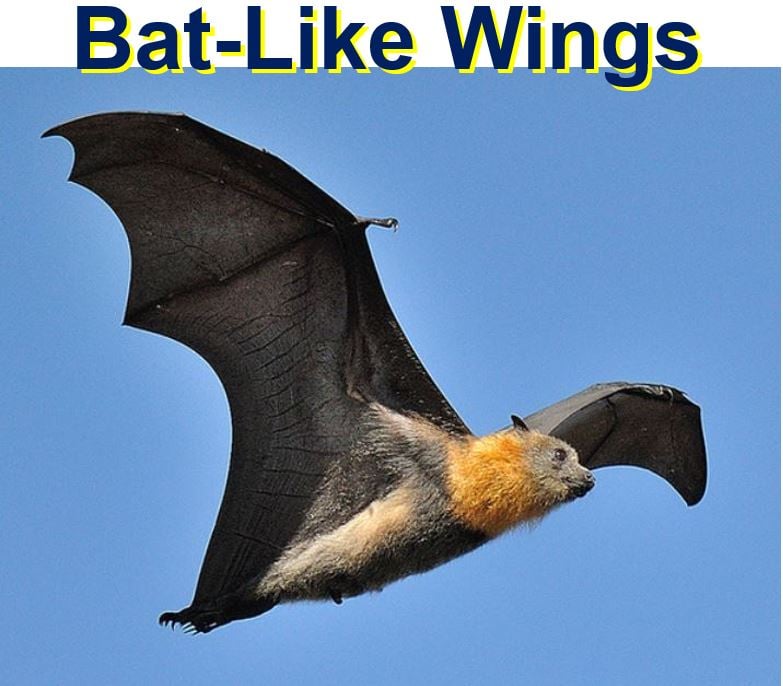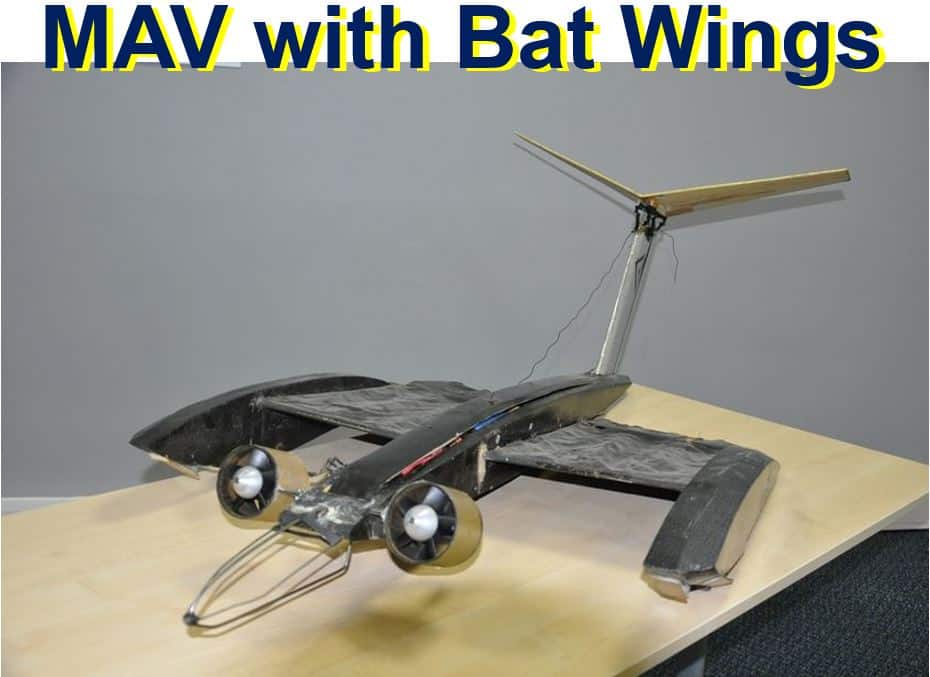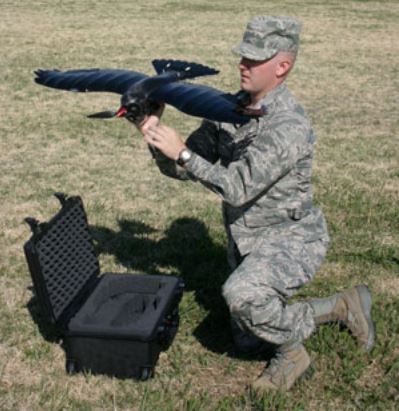The bat micro drone wings are both super agile in the air and also have the long range that fixed-wing micro air vehicles have. Tiny, unmanned flying drones with bat wings would be incredibly useful in several civilian applications, including rescue missions, surveying dangerous areas, and getting into awkward places.
Current micro air vehicles (MAVs) have one serious problem – designers have to choose between fixed wings, which give them range but no manoeuvrability, or rotary wings, which are great for manoeuvrability but don’t have the range.
MAVs are small unmanned aerial vehicles that can be as small as 15 centimetres (5.9 inches), some ultra-tiny ones are considerably smaller. Many of them are autonomous. Current research and development of MAVs is being pursued by the military, businesses and government organization. They have also been built for hobby purposes, such as aerial photography and aerial robotics contests.
 Bats ‘row’ their wings and create lift. This also allows them to hover and move in all directions. A micro air vehicle that can fly just like a bat would be master of the skies. (Image: realclear.com)
Bats ‘row’ their wings and create lift. This also allows them to hover and move in all directions. A micro air vehicle that can fly just like a bat would be master of the skies. (Image: realclear.com)
Now a team of engineers from Imperial College London and the University of Southampton have created bat-inspired wings made with artificial muscles and a polymer membrane, which combined give the designers much greater flexibility in their configuration.
Manoeuvrability plus range
According to the research team, what they have created gives MAVs the chance to have both high manoeuvrability and also a long range. Having a 2-in-1 flying vehicle would make their production considerably more economical.
The new experimental wings can change their shape in response to wind forces and other atmospheric turbulence, in the same way bats’ wings do.
 PN 10-16 Bat-flight inspires unique design for MAVs. Innovative membrane wings that work like artificial muscles have been successfully tested in-flight, paving the way for a new type of unmanned MAVs that have improved aerodynamic properties. (epsrc.ac.uk)
PN 10-16 Bat-flight inspires unique design for MAVs. Innovative membrane wings that work like artificial muscles have been successfully tested in-flight, paving the way for a new type of unmanned MAVs that have improved aerodynamic properties. (epsrc.ac.uk)
The polymers in the wings come into action when an electric current runs through them. The wings can go stiff or relax in response, which helps them adapt their shape according to the environment they are flying in.
The engineers say this technology has no mechanical parts, which means they are much easier to maintain than current MAV wings.
These bat wings are the result of the combined teamwork of both the Southampton and Imperial team – the former did all the hands-on experimental work, while the latter pursued computational modelling research.
Nature is a source of inspiration for scientists
Over the past few years, more and more MAV developers and makers have been drawing inspiration from what they see in nature for their designs. By imitating what animals do, scientists believe they can improve flight performance considerably, increase efficiencies, and achieve better controllability.
Dr. Rafael Palacios, who works at Imperial College London, said:
“Nature is a great source of inspiration for us when it comes to making improvements to MAVs. A bat’s ability to expand and compress its wing structure in order to deal with the changing nature of the environment is a particularly useful feature to mimic.”
“The prototype wing we’ve developed could enable a MAV to constantly adapt to their environment in real-time. This ability to reconfigure would also allow multiple missions to be carried out using the same MAV, instead of us having to develop a totally new craft every time it needs to do a new type of task.”
 The US military has been researching and developing MAVs for several years. This soldiers is about to launch an MAV that not only looks like a bird, it also moves like one. It is programmed to fly, observe, perch, wait … and even explode! (Image: stateimpact.npr.org)
The US military has been researching and developing MAVs for several years. This soldiers is about to launch an MAV that not only looks like a bird, it also moves like one. It is programmed to fly, observe, perch, wait … and even explode! (Image: stateimpact.npr.org)
The next step is to incorporate their bat-like wings into new MAV designs. They predict their technology will be used in real-world scenarios by the end of this decade.
The study was funded by the the Engineering and Physical Sciences Research Council and the US Air Force Office for Scientific Research.
US Air Force Video – Micro Air Vehicles
The US Air Force is dedicating a lot of time and money into researching MAVs. In the video, the speaker talks about some tiny aircraft that are just the size of your thumbnail.
